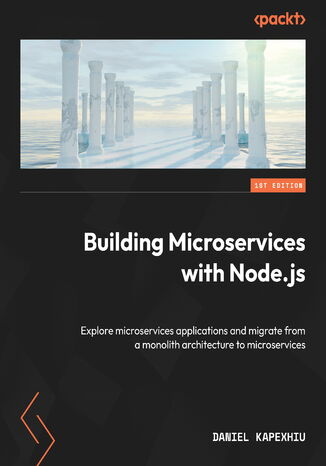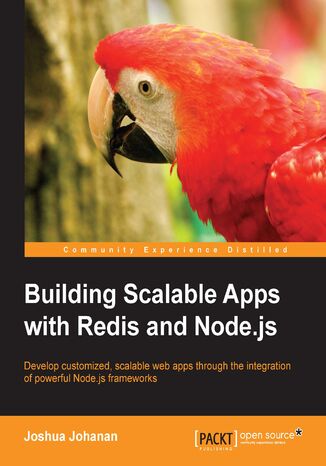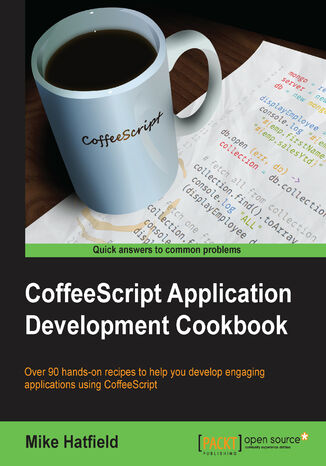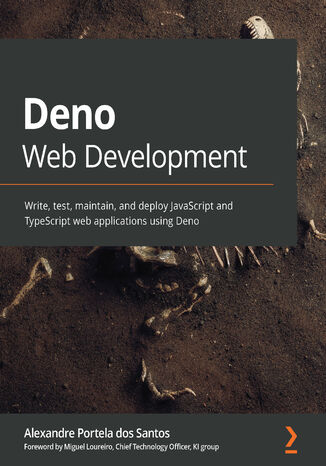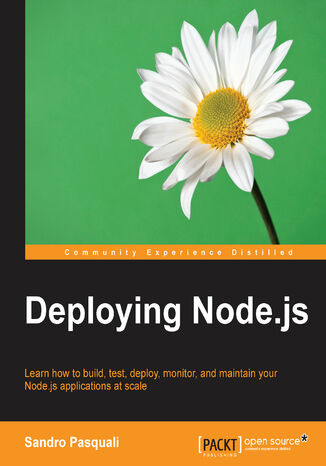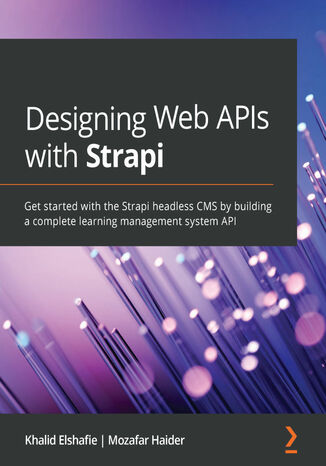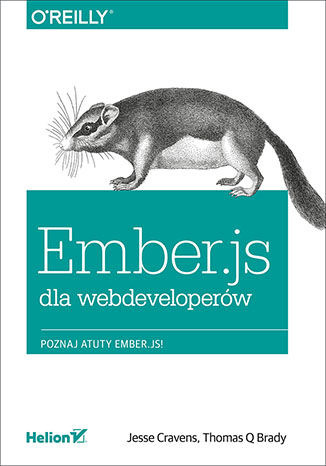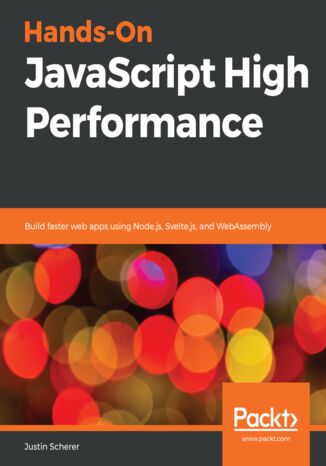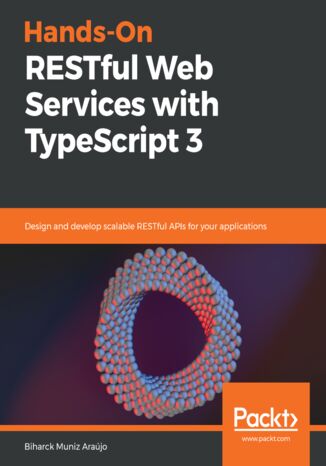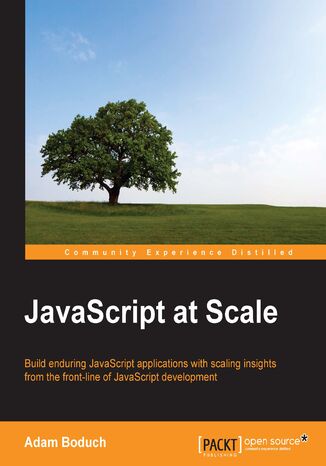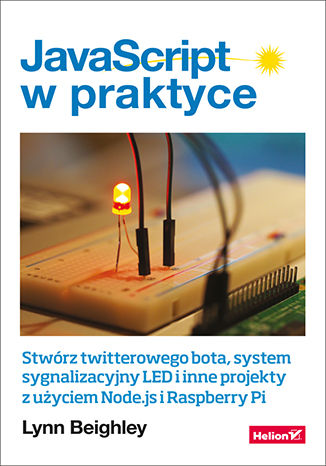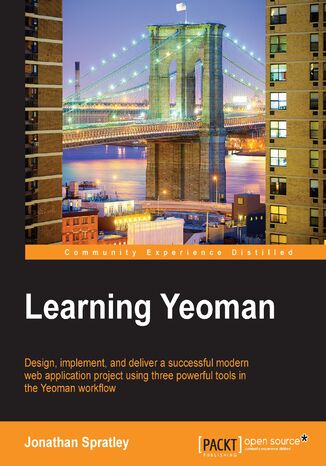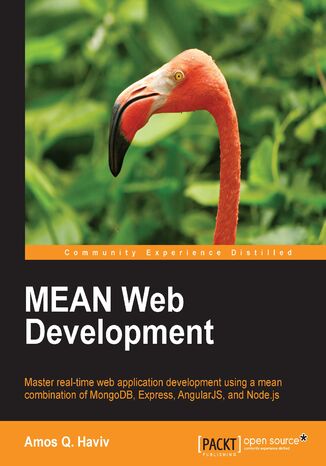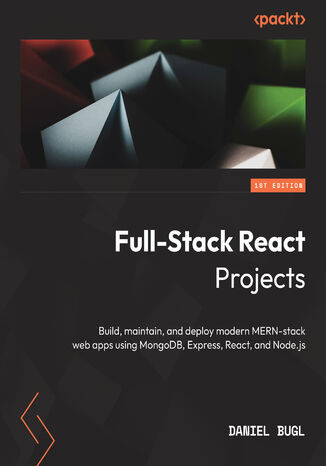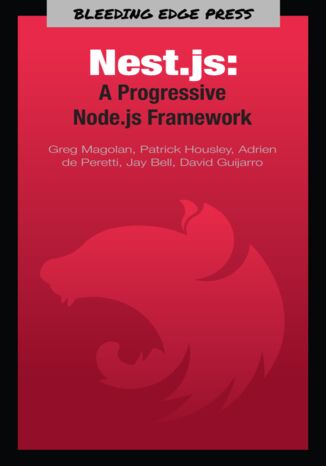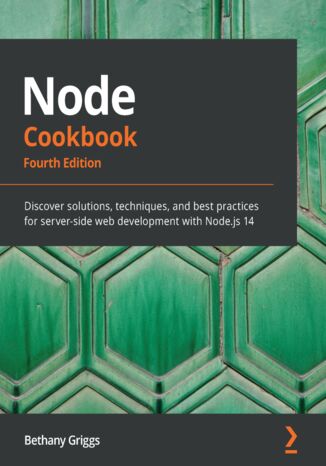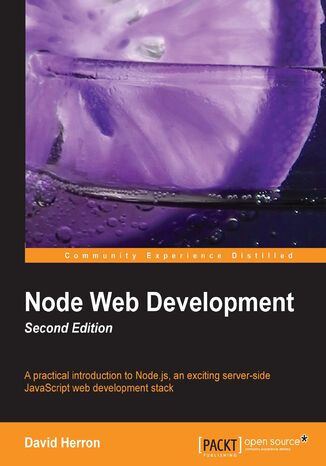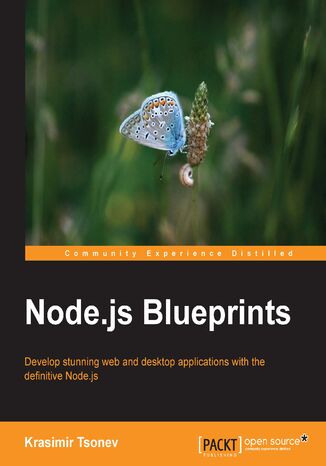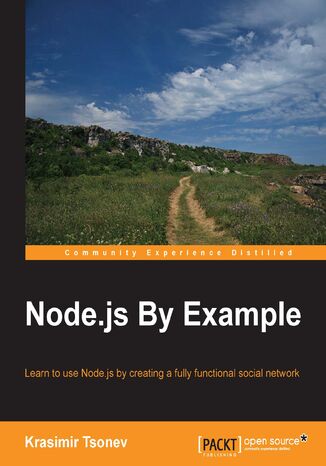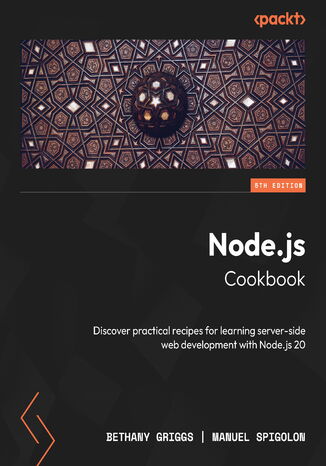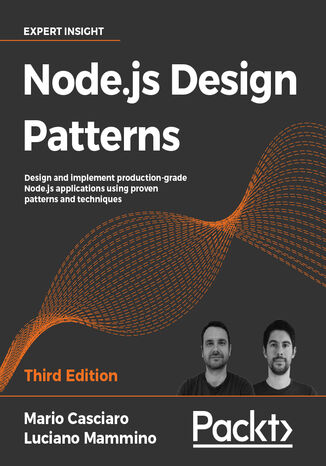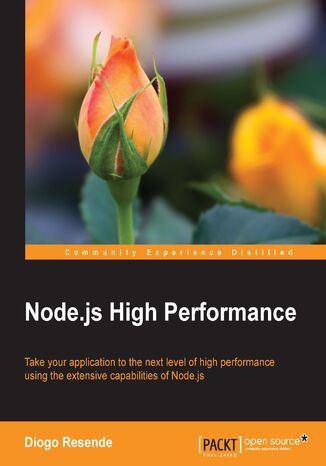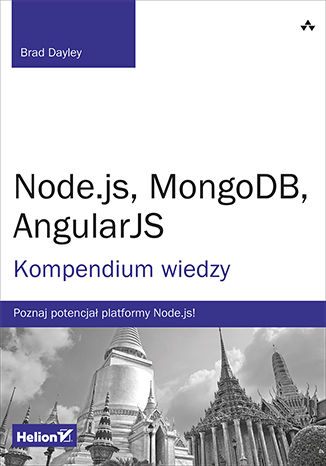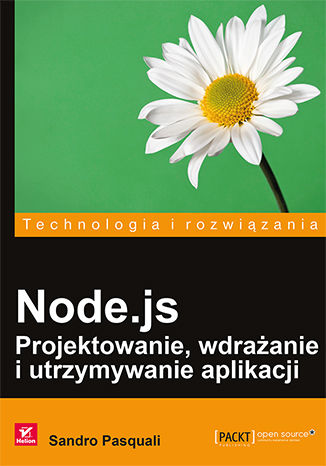Kategorie
Ebooki
-
Biznes i ekonomia
- Bitcoin
- Bizneswoman
- Coaching
- Controlling
- E-biznes
- Ekonomia
- Finanse
- Giełda i inwestycje
- Kompetencje osobiste
- Komputer w biurze
- Komunikacja i negocjacje
- Mała firma
- Marketing
- Motywacja
- Multimedialne szkolenia
- Nieruchomości
- Perswazja i NLP
- Podatki
- Polityka społeczna
- Poradniki
- Prezentacje
- Przywództwo
- Public Relation
- Raporty, analizy
- Sekret
- Social Media
- Sprzedaż
- Start-up
- Twoja kariera
- Zarządzanie
- Zarządzanie projektami
- Zasoby ludzkie (HR)
-
Dla dzieci
-
Dla młodzieży
-
Edukacja
-
Encyklopedie, słowniki
-
E-prasa
- Architektura i wnętrza
- BHP
- Biznes i Ekonomia
- Dom i ogród
- E-Biznes
- Ekonomia i finanse
- Ezoteryka
- Finanse
- Finanse osobiste
- Firma
- Fotografia
- Informatyka
- Kadry i płace
- Kobieca
- Komputery, Excel
- Księgowość
- Kultura i literatura
- Naukowe i akademickie
- Ochrona środowiska
- Opiniotwórcze
- Oświata
- Podatki
- Podróże
- Psychologia
- Religia
- Rolnictwo
- Rynek książki i prasy
- Transport i Spedycja
- Zdrowie i uroda
-
Historia
-
Informatyka
- Aplikacje biurowe
- Bazy danych
- Bioinformatyka
- Biznes IT
- CAD/CAM
- Digital Lifestyle
- DTP
- Elektronika
- Fotografia cyfrowa
- Grafika komputerowa
- Gry
- Hacking
- Hardware
- IT w ekonomii
- Pakiety naukowe
- Podręczniki szkolne
- Podstawy komputera
- Programowanie
- Programowanie mobilne
- Serwery internetowe
- Sieci komputerowe
- Start-up
- Systemy operacyjne
- Sztuczna inteligencja
- Technologia dla dzieci
- Webmasterstwo
-
Inne
-
Języki obce
-
Kultura i sztuka
-
Lektury szkolne
-
Literatura
- Antologie
- Ballada
- Biografie i autobiografie
- Dla dorosłych
- Dramat
- Dzienniki, pamiętniki, listy
- Epos, epopeja
- Esej
- Fantastyka i science-fiction
- Felietony
- Fikcja
- Humor, satyra
- Inne
- Klasyczna
- Kryminał
- Literatura faktu
- Literatura piękna
- Mity i legendy
- Nobliści
- Nowele
- Obyczajowa
- Okultyzm i magia
- Opowiadania
- Pamiętniki
- Podróże
- Poemat
- Poezja
- Polityka
- Popularnonaukowa
- Powieść
- Powieść historyczna
- Proza
- Przygodowa
- Publicystyka
- Reportaż
- Romans i literatura obyczajowa
- Sensacja
- Thriller, Horror
- Wywiady i wspomnienia
-
Nauki przyrodnicze
-
Nauki społeczne
-
Podręczniki szkolne
-
Popularnonaukowe i akademickie
- Archeologia
- Bibliotekoznawstwo
- Filmoznawstwo
- Filologia
- Filologia polska
- Filozofia
- Finanse i bankowość
- Geografia
- Gospodarka
- Handel. Gospodarka światowa
- Historia i archeologia
- Historia sztuki i architektury
- Kulturoznawstwo
- Lingwistyka
- Literaturoznawstwo
- Logistyka
- Matematyka
- Medycyna
- Nauki humanistyczne
- Pedagogika
- Pomoce naukowe
- Popularnonaukowa
- Pozostałe
- Psychologia
- Socjologia
- Teatrologia
- Teologia
- Teorie i nauki ekonomiczne
- Transport i spedycja
- Wychowanie fizyczne
- Zarządzanie i marketing
-
Poradniki
-
Poradniki do gier
-
Poradniki zawodowe i specjalistyczne
-
Prawo
- BHP
- Historia
- Kodeks drogowy. Prawo jazdy
- Nauki prawne
- Ochrona zdrowia
- Ogólne, kompendium wiedzy
- Podręczniki akademickie
- Pozostałe
- Prawo budowlane i lokalowe
- Prawo cywilne
- Prawo finansowe
- Prawo gospodarcze
- Prawo gospodarcze i handlowe
- Prawo karne
- Prawo karne. Przestępstwa karne. Kryminologia
- Prawo międzynarodowe
- Prawo międzynarodowe i zagraniczne
- Prawo ochrony zdrowia
- Prawo oświatowe
- Prawo podatkowe
- Prawo pracy i ubezpieczeń społecznych
- Prawo publiczne, konstytucyjne i administracyjne
- Prawo rodzinne i opiekuńcze
- Prawo rolne
- Prawo socjalne, prawo pracy
- Prawo Unii Europejskiej
- Przemysł
- Rolne i ochrona środowiska
- Słowniki i encyklopedie
- Zamówienia publiczne
- Zarządzanie
-
Przewodniki i podróże
- Afryka
- Albumy
- Ameryka Południowa
- Ameryka Środkowa i Północna
- Australia, Nowa Zelandia, Oceania
- Austria
- Azja
- Bałkany
- Bliski Wschód
- Bułgaria
- Chiny
- Chorwacja
- Czechy
- Dania
- Egipt
- Estonia
- Europa
- Francja
- Góry
- Grecja
- Hiszpania
- Holandia
- Islandia
- Litwa
- Łotwa
- Mapy, Plany miast, Atlasy
- Miniprzewodniki
- Niemcy
- Norwegia
- Podróże aktywne
- Polska
- Portugalia
- Pozostałe
- Przewodniki po hotelach i restauracjach
- Rosja
- Rumunia
- Słowacja
- Słowenia
- Szwajcaria
- Szwecja
- Świat
- Turcja
- Ukraina
- Węgry
- Wielka Brytania
- Włochy
-
Psychologia
- Filozofie życiowe
- Kompetencje psychospołeczne
- Komunikacja międzyludzka
- Mindfulness
- Ogólne
- Perswazja i NLP
- Psychologia akademicka
- Psychologia duszy i umysłu
- Psychologia pracy
- Relacje i związki
- Rodzicielstwo i psychologia dziecka
- Rozwiązywanie problemów
- Rozwój intelektualny
- Sekret
- Seksualność
- Uwodzenie
- Wygląd i wizerunek
- Życiowe filozofie
-
Religia
-
Sport, fitness, diety
-
Technika i mechanika
Audiobooki
-
Biznes i ekonomia
- Bitcoin
- Bizneswoman
- Coaching
- Controlling
- E-biznes
- Ekonomia
- Finanse
- Giełda i inwestycje
- Kompetencje osobiste
- Komunikacja i negocjacje
- Mała firma
- Marketing
- Motywacja
- Nieruchomości
- Perswazja i NLP
- Podatki
- Polityka społeczna
- Poradniki
- Prezentacje
- Przywództwo
- Public Relation
- Sekret
- Social Media
- Sprzedaż
- Start-up
- Twoja kariera
- Zarządzanie
- Zarządzanie projektami
- Zasoby ludzkie (HR)
-
Dla dzieci
-
Dla młodzieży
-
Edukacja
-
Encyklopedie, słowniki
-
E-prasa
-
Historia
-
Informatyka
-
Inne
-
Języki obce
-
Kultura i sztuka
-
Lektury szkolne
-
Literatura
- Antologie
- Ballada
- Biografie i autobiografie
- Dla dorosłych
- Dramat
- Dzienniki, pamiętniki, listy
- Epos, epopeja
- Esej
- Fantastyka i science-fiction
- Felietony
- Fikcja
- Humor, satyra
- Inne
- Klasyczna
- Kryminał
- Literatura faktu
- Literatura piękna
- Mity i legendy
- Nobliści
- Nowele
- Obyczajowa
- Okultyzm i magia
- Opowiadania
- Pamiętniki
- Podróże
- Poezja
- Polityka
- Popularnonaukowa
- Powieść
- Powieść historyczna
- Proza
- Przygodowa
- Publicystyka
- Reportaż
- Romans i literatura obyczajowa
- Sensacja
- Thriller, Horror
- Wywiady i wspomnienia
-
Nauki przyrodnicze
-
Nauki społeczne
-
Popularnonaukowe i akademickie
-
Poradniki
-
Poradniki zawodowe i specjalistyczne
-
Prawo
-
Przewodniki i podróże
-
Psychologia
- Filozofie życiowe
- Komunikacja międzyludzka
- Mindfulness
- Ogólne
- Perswazja i NLP
- Psychologia akademicka
- Psychologia duszy i umysłu
- Psychologia pracy
- Relacje i związki
- Rodzicielstwo i psychologia dziecka
- Rozwiązywanie problemów
- Rozwój intelektualny
- Sekret
- Seksualność
- Uwodzenie
- Wygląd i wizerunek
- Życiowe filozofie
-
Religia
-
Sport, fitness, diety
-
Technika i mechanika
Kursy video
-
Bazy danych
-
Big Data
-
Biznes, ekonomia i marketing
-
Cyberbezpieczeństwo
-
Data Science
-
DevOps
-
Dla dzieci
-
Elektronika
-
Grafika/Wideo/CAX
-
Gry
-
Microsoft Office
-
Narzędzia programistyczne
-
Programowanie
-
Rozwój osobisty
-
Sieci komputerowe
-
Systemy operacyjne
-
Testowanie oprogramowania
-
Urządzenia mobilne
-
UX/UI
-
Web development
-
Zarządzanie
Podcasty
- Ebooki
- Webmasterstwo
- Node.js
Node.js
– Immerse yourself in the world of microservices with this guide to migration from a monolithic architecture to microservices. – With this book, you’ll acquire a deep understanding of microservices architecture and apply it confidently in your web application projects. – As you progress, you’ll be guided through the process of creating a simple application and incorporating the Node.js framework into it, along with its commonly used libraries. – You’ll learn how the framework operates, how to configure it, and how to develop handlers for the web framework and explore how to deploy your application to a production server. – Get to grips with the intricacies of JavaScript and Node.js and find out how to approach microservices in Node.js, implement them effectively, and integrate RESTful APIs. – Gain insights into service-to-service authentication and authorization and learn how to work with databases and caching, as well as with monitoring and logging in microservices with Node.js. – By the end of this microservices book, you’ll be able to develop a web app using the Node.js framework, configure it, extend it using libraries available for this framework, and launch it using best practices.
Alexandre Portela dos Santos, Miguel Loureiro
Deno is a JavaScript and TypeScript runtime with secure defaults and a great developer experience. With Deno Web Development, you'll learn all about Deno's primitives, its principles, and how you can use them to build real-world applications. The book is divided into three main sections: an introduction to Deno, building an API from scratch, and testing and deploying a Deno application.The book starts by getting you up to speed with Deno's runtime and the reason why it was developed. You'll explore some of the concepts introduced by Node, why many of them transitioned into Deno, and why new features were introduced. After understanding Deno and why it was created, you will start to experiment with Deno, exploring the toolchain and writing simple scripts and CLI applications. As you progress to the second section, you will create a simple web application and then add more features to it. This application will evolve from a simple 'hello world' API to a web application connected to the database, with users, authentication, and a JavaScript client. In the third section, the book will take you through topics such as dependency management, configuration and testing, finishing with an application deployed in a cloud environment.By the end of this web development book, you will become comfortable with using Deno to create, maintain, and deploy secure and reliable web applications.
Khalid Elshafie, Mozafar Haider
Strapi is a Node.js-based, flexible, open-source headless CMS with an integrated admin panel that anyone can use and helps save API development time. APIs built with Strapi can be consumed using REST or GraphQL from any client. With this book, you'll take a hands-on approach to exploring the capabilities of the Strapi platform and creating a custom API from scratch.This book will help JavaScript developers to put their knowledge to work by guiding them through building powerful backend APIs. You'll see how to effortlessly create content structures that can be customized according to your needs, and gain insights into how to write, edit, and manage your content seamlessly with Strapi. As you progress through the chapters, you'll discover a wide range of Strapi features, as well as understand how to add complex features to the API such as user authentication, data sorting, and pagination. You'll not only learn how to find and use existing plugins from the open-source community but also build your own plugins with custom functionality with the Strapi plugin API and add them to the admin panel. Finally, you'll learn how to deploy the API to Heroku and AWS.By the end of this book, you'll be able to build powerful, scalable, and secure APIs using Strapi.
Poznaj atuty Ember.js! Ember.js to biblioteka języka JavaScript, dzięki której możesz sprawnie budować aplikacje na podstawie wzorca MVC (ang. Model View Controller). Ember.js znakomicie sprawdza się przy tworzeniu jednostronicowych aplikacji internetowych (ang. Single Page Applications), a ponadto usprawnia automatyczne aktualizowanie szablonów czy dwustronne wiązanie danych. Jeżeli chcesz zgłębić tajniki tej biblioteki, ta książka jest dla Ciebie. Dzięki niej poznasz potencjał Ember.js, jej atuty oraz techniki pracy. Lektura kolejnych rozdziałów pozwoli Ci poznać zasady działania generatora aplikacji Ember i szablonów, a także proces budowy modelu danych i kontrolerów. Na sam koniec dowiesz się, jak zapisywać dane po stronie klienta. Po zgłębieniu możliwości Ember.js nauczysz się przygotowywać serwer, który będzie przetwarzał żądania wysyłane z Twojej aplikacji. W tym celu wykorzystasz Rails MVC. W trakcie lektury zbudujesz własną aplikację o nazwie Rock’n’roll. Jesteś ciekaw, co potrafi? Sięgnij po tę książkę i przekonaj się sam! Przygotuj środowisko pracy oraz wygeneruj podstawowy kod. Sprawdź, w jaki sposób „ergonomia” zapewniana przez Ember pozwala minimalizować ilość kodu. Przygotuj szablony dla prototypu książki dzięki Handlebars.js. Wykorzystaj rutery do zarządzania stanem aplikacji bez przeładowywania zawartości strony. Połącz kontrolery i widoki ze zdarzeniami oraz synchronizuj dane dzięki powiązaniom. Przygotuj infrastrukturę wspierającą Ember za pomocą REST-owego API lub Ruby on Rails. Wykorzystaj bibliotekę Data do zapisywania danych i komunikacji z infrastrukturą wspierającą. Twórz uniwersalne modularne widżety rozszerzające możliwości Twoich aplikacji. Pisz ambitne programy w JavaScript. Z Ember.js zaawansowane aplikacje internetowe są w Twoim zasięgu!
High-performance web development is all about cutting through the complexities in different layers of a web app and building services and APIs that improve the speed and performance of your apps on the browser. With emerging web technologies, building scalable websites and sustainable web apps is smoother than ever. This book starts by taking you through the web frontend, popular web development practices, and the latest version of ES and JavaScript. You'll work with Node.js and learn how to build web apps without a framework. The book consists of three hands-on examples that help you understand JavaScript applications at both the server-side and the client-side using Node.js and Svelte.js. Each chapter covers modern techniques such as DOM manipulation and V8 engine optimization to strengthen your understanding of the web. Finally, you’ll delve into advanced topics such as CI/CD and how you can harness their capabilities to speed up your web development dramatically.By the end of this web development book, you'll have understood how the JavaScript landscape has evolved, not just for the frontend but also for the backend, and be ready to use new tools and techniques to solve common web problems.
In the world of web development, leveraging data is the key to developing comprehensive applications, and RESTful APIs help you to achieve this systematically. This book will guide you in designing and developing web services with the power of TypeScript 3 and Node.js. You'll design REST APIs using best practices for request handling, validation, authentication, and authorization. You'll also understand how to enhance the capabilities of your APIs with ODMs, databases, models and views, as well as asynchronous callbacks. This book will guide you in securing your environment by testing your services and initiating test automation with different testing approaches. Furthermore, you'll get to grips with developing secure, testable, and more efficient code, and be able to scale and deploy TypeScript 3 and Node.js-powered RESTful APIs on cloud platforms such as the Google Cloud Platform. Finally, the book will help you explore microservices and give you an overview of what GraphQL can allow you to do.By the end of this book, you will be able to use RESTful web services to create your APIs for mobile and web apps and other platforms.
Język JavaScript, początkowo wykorzystywany tylko do sterowania pracą przeglądarek internetowych, dzięki współpracy z Node.js znacząco rozszerzył swoje możliwości. To środowisko uruchomieniowe zbudowano na bazie silnika V8. Udostępnia biblioteki obsługujące procesy wejścia-wyjścia wraz z komunikacją sieciową. Umożliwia posługiwanie się JavaScriptem poza przeglądarką internetową. W ten sposób uruchamia się skrypty powłoki, zarządza usługami backendowymi i wykonuje skrypty bezpośrednio na urządzeniach docelowych. Możliwości JavaScriptu stają się imponujące! To zwięzły i praktyczny podręcznik, w którym znajdziesz wiedzę potrzebną do rozpoczęcia pracy z Node.js. Dzięki tej książce - i płytce Raspberry Pi - w krótkim czasie nauczysz się wykorzystywać JavaScript w sposób bardzo nieoczywisty: napiszesz bota, którego uruchomisz na minikomputerze Raspberry Pi i będziesz wykorzystywać do śledzenia wpisów na Twitterze. Ponadto poznasz kilka ważnych elementów języka JavaScript, napiszesz serwer sieciowy i program sterujący pracą diod LED. Pod koniec dowiesz się więcej o fascynujących możliwościach, jakie przed tandemem JavaScript i Node.js otwiera rodzący się na naszych oczach internet rzeczy! Najważniejsze zagadnienia: przygotowanie środowiska i narzędzi potrzebnych do pracy tworzenie kodu w JavaScripcie tworzenie twitterowego bota na Raspberry Pi JavaScript i Node.js a internet rzeczy Node.js i JavaScript: sprawdź ich nieoczywiste zastosowania!
The MEAN stack is a collection of the most popular modern tools for web development; it comprises MongoDB, Express, AngularJS, and Node.js.Starting with MEAN core frameworks, this project-based guide will explain the key concepts of each framework, how to set them up properly, and how to use popular modules to connect it all together. By following the real-world examples shown in this tutorial, you will scaffold your MEAN application architecture, add an authentication layer, and develop an MVC structure to support your project development. Finally, you will walk through the different tools and frameworks that will help expedite your daily development cycles.Watch how your application development grows by learning from the only guide that is solely orientated towards building a full, end-to-end, real-time application using the MEAN stack!
Understanding full-stack development is vital as companies aim to bridge the gap between frontend and backend development. Recent trends show deeper integration between the two, opening numerous possibilities for building real-world web applications, through server-side technologies like Node.js, Express, and MongoDB. Written by the author of Learning Redux and Learn React Hooks, and CEO of TouchLay, Modern Full-Stack React Projects will guide you through the entire process of advancing from a frontend developer to a full-stack developer. Starting with how to set up robust projects that can be maintained for a long time, you’ll then progress toward developing a backend system and integrating it with the frontend. Throughout the book, you’ll learn how to build, test, and deploy a blog application and a chat application. You’ll also explore MongoDB, Express, React, Node.js (MERN) stack, best practices for frontend and backend development, different full-stack architectures, unit and end-to-end testing, and deployment of full-stack web applications. Once you get to grips with the essential concepts, you’ll progress to learn how to use Next.js, an enterprise-grade full-stack web framework for React. By the end, you’ll be well-versed in the MERN stack and all set to create performant and scalable full-stack web applications.
Nest.js: A Progressive Node.js Framework. Hit the ground running with Nest.js
Greg Magolan, Patrick Housley, Adrien de Peretti, Jay Bell, ...
Nest.js is a modern web framework built on a Node.js Express server. With the knowledge of how to use this framework, you can give your applications an organized codebase and a well-defined structure.The book begins by showing how to use Nest.js controllers, providers, modules, bootstrapping, and middleware in your applications. You’ll learn to use the authentication feature of Node.js to manage the restriction access in your application, and how to leverage the Dependency Injection pattern to speed up your application development. As you advance through the book, you'll also see how Nest.js uses TypeORM—an Object Relational Mapping (ORM) that works with several relational databases. You’ll use Nest.js microservices to extract part of your application’s business logic and execute it within a separate Nest.js context. Toward the end of the book, you’ll learn to write tests (both unit tests as well as end-to-end ones) and how to check the percentage of the code your tests cover.By the end of this book, you’ll have all the knowledge you need to build your own Nest.js applications.
A key technology for building web applications and tooling, Node.js brings JavaScript to the server enabling full-stack development in a common language. This fourth edition of the Node Cookbook is updated with the latest Node.js features and the evolution of the Node.js framework ecosystems.This practical guide will help you to get started with creating, debugging, and deploying your Node.js applications and cover solutions to common problems, along with tips to avoid pitfalls. You'll become familiar with the Node.js development model by learning how to handle files and build simple web applications and then explore established and emerging Node.js web frameworks such as Express.js and Fastify. As you advance, you'll discover techniques for detecting problems in your applications, handling security concerns, and deploying your applications to the cloud. This recipe-based guide will help you to easily navigate through various core topics of server-side web application development with Node.js.By the end of this Node book, you'll be well-versed with core Node.js concepts and have gained the knowledge to start building performant and scalable Node.js applications.
Bethany Griggs, Manuel Spigolon
Node.js is a game-changing technology for building modern web applications and tooling, bringing the power of JavaScript to the server and enabling full-stack development in a unified language. This updated edition of this Node.js cookbook, featuring Node.js 22, equips you with the latest advancements and enhancements in the Node.js framework ecosystem.From Bethany Griggs, who has served on the Node.js Technical Steering Committee and participated in the Node.js Release Working Group, and Manuel Spigolon, a core maintainer of Fastify, comes this fifth edition of the Node.js Cookbook to help you master Node.js 22. This book guides you step by step through crafting reusable code with Node.js modules, streamlining development using the Fastify web framework, and implementing data persistence in databases and rigorous testing practices for robust applications. You’ll address security concerns, optimize performance with worker threads, deploy Node.js microservices using containerization and orchestration, and tackle troubleshooting with effective debugging strategies. Packed with real-world examples, this guide empowers you to harness Node.js 22's full potential for creating secure, performant, and dynamic applications.
Mario Casciaro, Luciano Mammino
In this book, we will show you how to implement a series of best practices and design patterns to help you create efficient and robust Node.js applications with ease.We kick off by exploring the basics of Node.js, analyzing its asynchronous event driven architecture and its fundamental design patterns. We then show you how to build asynchronous control flow patterns with callbacks, promises and async/await. Next, we dive into Node.js streams, unveiling their power and showing you how to use them at their full capacity. Following streams is an analysis of different creational, structural, and behavioral design patterns that take full advantage of JavaScript and Node.js. Lastly, the book dives into more advanced concepts such as Universal JavaScript, scalability and messaging patterns to help you build enterprise-grade distributed applications.Throughout the book, you’ll see Node.js in action with the help of several real-life examples leveraging technologies such as LevelDB, Redis, RabbitMQ, ZeroMQ, and many others. They will be used to demonstrate a pattern or technique, but they will also give you a great introduction to the Node.js ecosystem and its set of solutions.
Node.js, MongoDB, AngularJS. Kompendium wiedzy
Node.js to wiodące, serwerowe środowisko programistyczne. MongoDB to najpopularniejsza baza danych NoSQL, a AngularJS to szybko zyskujące wiodącą rolę środowisko służące do projektowania interfejsów opartych na technologii MVC. Czego chcieć więcej? W sieci króluje połączenie serwera Apache z bazą danych MySQL i językiem PHP. Do niedawna wydawało się, że pozycja tej trójcy na fotelu lidera jest niezagrożona. Jednak na horyzoncie pojawili się nowi gracze: Node.js, MongoDB oraz AngularJS! Node.js to platforma, która pozwoli Ci stworzyć niezwykle wydajną aplikację internetową przy użyciu języka JavaScript. AngularJS specjalizuje się w interfejsie użytkownika opartym na MVC. Natomiast MongoDB to jedna z najpopularniejszych baz danych NoSQL. Co wynika z połączenia tych trzech narzędzi? Przekonasz się, gdy sięgniesz po tę niezwykłą książkę! W trakcie lektury poznasz składnię i niuanse języka JavaScript, a następnie zgłębisz tajemnice środowiska Node.js. Na kolejnych stronach znajdziesz informacje na temat korzystania ze zdarzeń, procesów nasłuchiwania, wywołań zwrotnych oraz obsługi operacji wejścia-wyjścia. Ponadto przekonasz się, jak w Node.js zaimplementować usługi HTTP oraz skalować tworzoną aplikację. W dalszej części przejdziesz do poznawania tajników bazy MongoDB. Skonfigurujesz połączenie z bazą oraz poznasz dokumenty i ich kolekcje w MongoDB. Na sam koniec zobaczysz, jak przygotować klienta Twoich usług za pomocą AngularJS. Ta książka jest pasjonująca i prezentuje wszystkie warstwy nowoczesnej aplikacji internetowej — to lektura obowiązkowa każdego programisty! Stwórz skalowalną aplikację za pomocą najnowocześniejszych narzędzi! Implementowanie dynamicznego serwera WWW o dużej skalowalności za pomocą komponentów Node.js i Express Implementowanie magazynu danych MongoDB dla aplikacji internetowych Uzyskiwanie dostępu do bazy danych MongoDB z poziomu kodu JavaScript aplikacji Node.js oraz prowadzenie interakcji z bazą Definiowanie niestandardowych dyrektyw AngularJS, które rozszerzają język HTML Budowanie w języku JavaScript usług internetowych po stronie serwera Implementowanie usług po stronie klienta, które mogą prowadzić interakcję z serwerem WWW środowiska Node.js Tworzenie dynamicznych widoków przeglądarki, które zapewniają zaawansowane możliwości interakcji z użytkownikiem Dodawanie do aplikacji i stron internetowych komponentów uwierzytelnianych kont użytkowników i zagnieżdżonych komentarzy Brad Dayley -— programista z wieloletnim doświadczeniem. Twórca licznych stron i aplikacji internetowych o różnym stopniu skomplikowania. Autor popularnych książek poświęconych bazom NoSQL, językowi JavaScript oraz innym narzędziom.
Node.js. Projektowanie, wdrażanie i utrzymywanie aplikacji
W ciągu kilku ostatnich lat JavaScript stał się niezwykle wszechstronnym i wydajnym językiem programowania. Dla programistów kodujących w tym języku świetnym narzędziem okazuje się platforma Node.js. Ten framework open source został zaprojektowany do tworzenia skalowalnych aplikacji internetowych, jednak umożliwia też tworzenie aplikacji sterowanych zdarzeniami. Użytkownicy docenili jego wygodę. Node.js odniósł spory sukces i stał się kluczowym narzędziem programistycznym w wielu firmach. Mimo to odnalezienie wyczerpujących informacji o profesjonalnym projektowaniu, testowaniu i wdrażaniu oprogramowania za jego pomocą jest dość trudne. Niniejsza książka zawiera opis technik i narzędzi pozwalających na wykonanie w Node.js elastycznej, inteligentnej, trwałej i łatwej w utrzymaniu aplikacji o znakomitej jakości. Poza podstawami zaprezentowano tu również zestaw wzorców ułatwiających rozwiązywanie typowych problemów pojawiających się w dzisiejszych projektach. Nie zabrakło licznych przykładów z życia oraz wskazówek, które doceni każdy, kto musi sprawnie wdrożyć trudny projekt. Książka umożliwia zgłębienie tajników Node.js i naukę projektowania modułowego. Sporo miejsca poświęcono też testowaniu i monitorowaniu aplikacji oraz strategiom utrzymania aplikacji przez większy zespół. Najważniejsze zagadnienia: mocne i słabe strony Node.js techniki skalowania aplikacji i komunikacja międzyprocesowa zarządzanie pamięcią i monitorowanie sesji właściwe budowanie potoku tworzenia aplikacji konserwacja systemu i strategie zarządzania zależnościami Node.js: dojrzała technologia, znakomita wydajność i wszechstronność! Sandro Pasquali — programista, przedsiębiorca, twórca firmy technologicznej Simple.com, która sprzedawała pierwszy na świecie framework aplikacyjny oparty na języku JavaScript. Obecnie autor szkoli zespoły programistów korporacyjnych. W swoim czasie zarządzał projektowaniem wielu aplikacji dla takich firm jak Nintendo, Major League Baseball, LimeWire, AppNexus i Conde Nast, a także dla instytutów badawczych i szkół. Zawsze szuka nowych sposobów na połączenie doskonałości projektowej z innowacyjną technologią.

